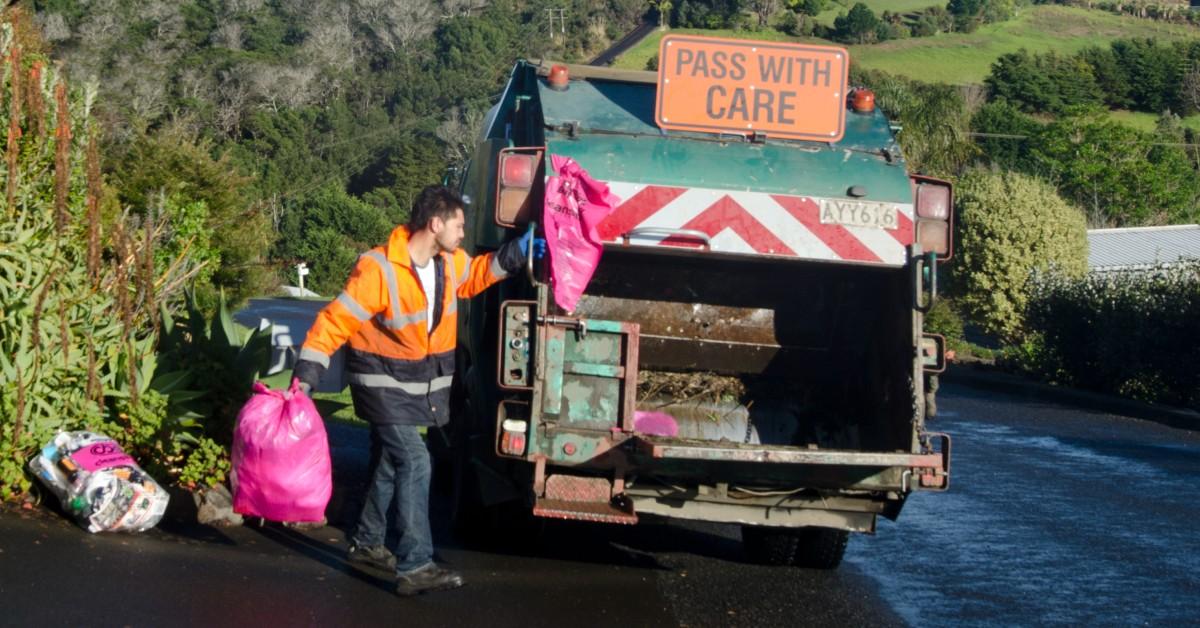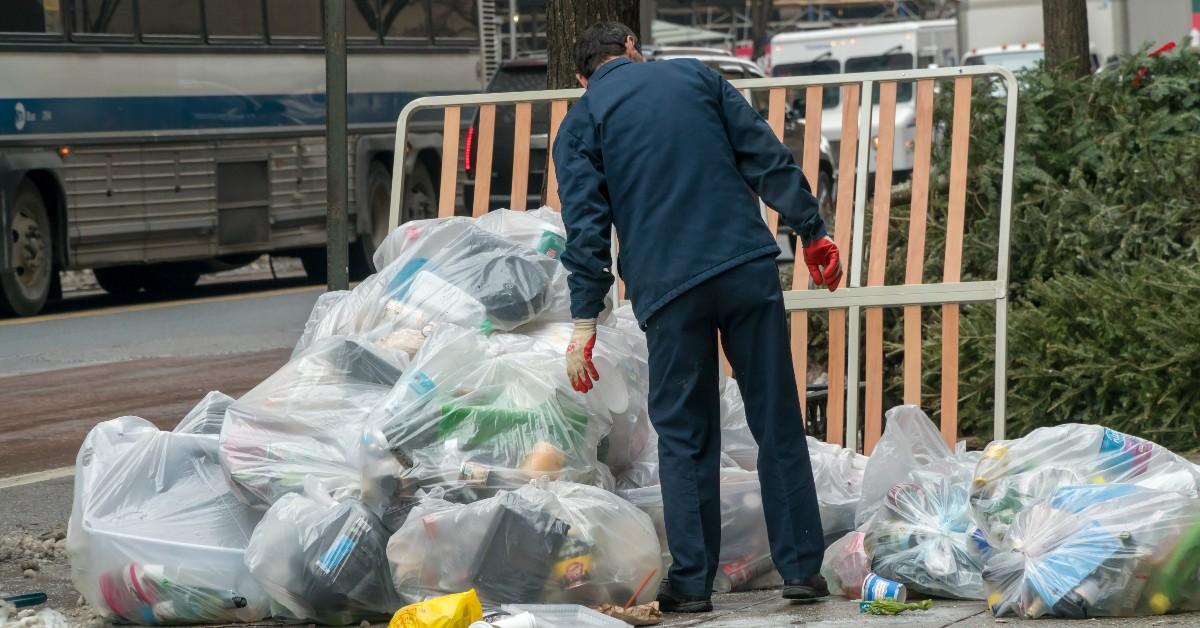Taking Out the Trash: The Hunt for the Killer of a Union Boss Who Took on the Mob's Garbage Collection Racket

John "Little Ceasar" Acropolis had led a hard life. The son of Greek immigrants, he had been orphaned at the age of just 3 and was subsequently sent to the Woodycrest Home in New York before being moved on to be raised in a Leake & Watts Home home in Yonkers, the agency providing foster and adoption services. A teacher at Woodycreast school couldn't pronounce his full Greek name and shortened it to "Acropolis," meaning that he never even knew what his real family name had been.
Despite the tragedy of his childhood and growing up enjoying street fights, he was a top student and athlete at Yonkers High. After being adopted by two local school teachers, Acropolis successfully attended Colgate University in Hamilton, New York, where he was an All-American basketball player, captaining the team. Handsome, charismatic and athletic, Acropolis needed to make no effort to be popular with most people he met.
Seeking to earn extra money for himself, Acropolis worked as a truck driver during the summer breaks from college and soon became interested in union issues amongst the city's working class. He joined Local 456, part of the International Brotherhood of Teamsters founded in 1903. He showed his dedication to work, learning, and bettering himself during this period, taking night classes at New York University and teaching gym classes at Roosevelt High School.
In the late 1930s, he began to internally campaign against the regime running Local 456, believing they had become corrupt. Likely in part thanks to his efforts to clean up the union on a reform ticket, he was elected secretary-treasurer in 1941. The election was tempestuous and mean-spirited, with a fight breaking out with his defeated opponent, for which Acropolis ended up on assault charges.
The outbreak of the Second World War momentarily curtailed his union ambitions, with Acropolis serving in the U.S. Navy. After his service, he returned to his union activities, being elected president of Local 456 in 1946 and quickly building his union into a significant force in Westchester County with over 2,500 members from a starting point of just 400. Overall, Teamsters Local 456 became one of the most powerful unions in the country, overseeing 30,000 workers all over New York in various trades.
His ambition earners him the nickname "Little Ceasar."
Acropolis genuinely cared about the issues facing working people in New York, and it might be said that his passion for getting things done occasionally allowed him to walk a fine line with the law. In 1948, for example, he was threatened with arrest from the health commissioner for creating a health hazard by boycotting heating oil trucks in the winter. In 1949, a garbage truck strike was halted after officials invoked the Condon-Waldin law, which banned strikes from municipal employees.
It wasn't just nonviolent actions from opponents of his activism either, with Acropolis present when William Condon Jr. was beaten in a Yonkers bar. Condon Jr. was the son of a state senator who backed that anti-strike action, and those who carried out the beating were all members of Local 456. While there was no suggestion he was involved in the assault itself, Acropolis was called as a witness and stood in solidarity with his comrades, stating he saw nothing. The men were found guilty anyway.
Soon afterward, more union members were involved in criminality, and it was undoubtedly an escalation. A garbage truck was stolen from a non-union firm, and the driver was still inside, with Local 456 members kidnapping him as they made off with the vehicle. While he was returned unharmed, the truck was soon found submerged in the Hudson near Tarrytown.
Following the garbage strike, the Yonkers Common Council voted to suspend municipal waste collection. Instead, Acropolis persuaded the Yonkers Chamber of Commerce to establish and bankroll a private garbage collection service that only employed his union members, promoting his men as not being corrupt, unlike their rivals. The new company would be called Rex Carting and was a triumph for Acropolis, winning him plaudits amongst the Local 456 members.

However, while Local 456 may have been pleased, the move was outrageous to members of Local 27, a union out of the Bronx that had been pushing northward. Local 27 was connected to a private carting company controlled by the Genovese Mafia family, with Nicholas "Cockeyed Nick" Rattenni being the president, a close associate of boss Frank Costello.
Alongside Rattenni, the treasurer of Local 27, was the notorious Joe Parisi, a convicted rapist who had been indicted previously on charges ranging from murder and armed robbery to assault and coercion. Also involved was Bernie Adelstein, who would lead Local 813 and be extensively named in both a 1989 civil racketeering charge brought by the government against the International Brotherhood of Teamsters and proceedings against John Gotti and other Gambino family crime figures.
The mafia and garbage disposal have a long history, with the business being relatively easy to get started in and being highly profitable. As a legal enterprise, there is very little anyone can do about the mob's involvement, and the enterprise will frequently be used for money laundering from more illicit schemes such as drug running. When cities began to stop collecting waste, private haulers moved in, as did the mafia. Crews would divide up routes, rig bids, and regularly harass non-mob affiliated companies. Soon enough, the Italian and Irish mafias had a monopoly over the Northwest and upper Midwest.
At the time, Rattenni was a captain for the Genovese family and a classic street hood, rising from obscurity during the hard times of the 1930s to become a figure of almost legend in Yonkers. His name was made through garbage carting and his weaponization of the unions, being involved in everything from loansharking to protection rackets. Amongst his best friends, he counted Anthony "Tony Pro" Provenzano, the Jersey City Teamster boss who is a key suspect in the disappearance of Jimmy Hoffa.
Like John Gotti, who would follow him many years later, Rattenni knew the power of image and keeping the local people on his side. He gave away free color televisions, donated pearls to charity groups, and gave religious artwork to a local priest. Many would have called him a gentleman noted for his generosity. However, he wasn't an individual to be crossed.
Following the ending of sanitation services in 1949, Rattenni's Westchester Carting and Fleetwood Haulage controlled 9 percent of carting in the county. His position with Local 21 allowed the mob boss to instantly settle disputes with the smaller carting companies in their own favor.
Rex Carting moving in on these businesses alone would have been enough to raise the anger of Rattenni. Still, when Acropolis also attempted to organize workers of Westchester Carting for his union, anger is likely to have gone through the roof. In response, several of Rex Carting's trucks were burned, with customers being threatened and stores vandalized if they continued to use Rex Carting. It was a warning shot.
On Aug. 26, 1952, Acropolis was walking into his apartment or 1080 Warburton Avenue in Yorkers in the early hours of the morning. It was 2:30am, and he wasn't alone. Either Acropolis trusted the other person enough to allow them to walk behind him, or somebody was lying in wait as he walked through the foyer. In any case, whoever was behind him simply put a gun to the back of his skull and fired twice, killing Acropolis instantly.
He was 43 years old.
THE INVESTIGATION
When Acropolis didn't show up at the union office the next day, Vice President Edward Doyle Sr. became quickly concerned. The bad blood with the Genovese family was well known, and Acropolis had already received death threats, not only over his union activity but his widespread reputation as a ladies' man. The concern only grew stronger when Acropolis also didn't show the next day, and Doyle decided to go to the apartment to check on his friend and colleague.
- FPD INVESTIGATION: EXAMINING NEW YORK GOVERNOR ANDREW CUOMO'S 'MYSTERIOUS TIES' TO ORGANIZED CRIME
- He might have killed hundreds for the Italian mob, but here's why he was released from prison last month.
- How Infamous Mobster Sammy 'The Bull' Gravano Got His Nickname — as a Child Growing Up in Brooklyn
The building superintendent let him in at around 4 p.m. on Aug. 28, and together they discovered Acropolis' body lying face down on the floor in a pool of his own blood. A suit he had picked up from a Yonkers tailor's shop was still over his arm, with his mail and keys still in his hands. He'd had no time to defend himself, and no indication death was right behind him. There was so much blood at the scene that police initially believed he must have been beaten to death.
The killer emptied his victim's wallet, perhaps either in a moment of greedy opportunism or an attempt to make it look like a robbery, then locked the apartment and fled. Intriguingly, if Acropolis' keys truly had been in his hand as reports suggested, the question must be asked as to how the killer locked the apartment afterward.

A report in "The Herald Statesman" said that when he died, Acropolis was "wearing a summer gabardine blue jacket and trousers, a white shirt, grey socks with clocks on the side, low black shoes and a tie, the color of which could not be determined because it was saturated with blood."
The funeral of Acropolis was an outpouring of grief and anger both amongst the local Greek community and union workers, with between 5,000 and 10,000 people gathering in Getty Square. Nine flower cars and a stunning 500 further vehicles formed a mile-long procession to Mount Hope Cemetary in Rochester, New York.
As the size of the funeral showed, the murder of Acropolis was a sensation in Yonkers, with detectives from the city being joined by those from the county and also from New York. Hundreds were interviewed, with police initially suspecting that the killing may have been an internal rivalry or something in his private life, perhaps linked to his womanizing. One theory of investigators is that the murder was connected in some way to Caralee Bly, a Broadway showgirl from Glendale who, despite his many affairs, was somehow still his fiancé. She married one of Acropolis' friends less than a year after his murder.
Amongst those interviewed were locksmiths who police thought may have made a duplicate key to the apartment, as well as bartenders, with investigators suspecting that somebody may have received a tip as to Acropolis' movements on the morning of his death. Also interviewed was Rattenni.
A COLD CASE
However, the investigation never led anywhere. In subsequent years, questions have been asked about how interested the NYPD was in the case and whether corruption led to the police essentially turning a blind eye to a mob hit. In the 1960s, investigations revealed that police officials were known to be "on-call" whenever Rattenni wanted something, with Councilman Frank Adamo, Chairman of the Trade Waste Committee, being an ally. The two played golf, Adamo visited Rattenni at home and essentially was his voice at City Hall.
Concerns over the quality of the investigation into the Acropolis killing include the fact the murder weapon wasn't found until six years after the murder, despite being in a bush outside the apartment where Acropolis was killed the entire time.
A groundskeeper was cutting pack the hedge and burning it when four explosions gave him the shock of his life — it was four bullets exploding. Sifting through the remains, investigators found a charred .38-caliber Smith & Wesson. Two shots had previously been fired from the weapon, but it had been exposed to the elements for so long that a 100% positive ballistics match to the bullets used to kill Acropolis couldn't be made. All that was known about the weapon was that it had been stolen from a Navy supply ship on the New Jersey waterfront.
Why police failed to find the weapon in such a prominent and noticeable location was never explained. In the end, nothing came of the investigation, and like so many killings linked to the mob, the case went away. However, it certainly wasn't forgotten, and in 2008, new moves were made to uncover the truth of what happened to John Acropolis and how involved the Yonkers Police Department was in covering it up.
The New York Civil Liberties Union filed a lawsuit against the City of Yonkers for refusing to release public records of the investigation into the Acropolis murder, with the suit filed on behalf of retired schoolteacher John Bly, the brother of Caralee Bly. Bly intended to write a book about the case and had requested access to the records for research purposes.
Yonkers police initially turned down the request as the murder was still technically active, citing a law that allows the maintenance of confidentiality on records that are still under investigation, maintaining that any opening of the files might impede their investigation. However, many believed that the police were being deliberately obstructive over a case that had been cold for over fifty years with no likely chance of being solved.
"I believe that state laws say these records should be available to the public," Bly said in a statement released by the NYCLU. "I've been stonewalled by the Yonkers Police Department. It is very frustrating. People have a right to know what their government has done."

"This type of secrecy is unacceptable and incompatible with open government," said Linda Berns, director of the NYCLU's Lower Hudson Valley Chapter. "The unsolved murder of John Acropolis is among the most sensational crimes in Yonkers history. It is a subject ripe for public scrutiny."
Speaking to the New York Times the following year, Yonkers corporation counsel Frank J. Rubino said that opposition to unsealing the files wasn't about the Acropolis case in particular. Instead, they were worried over the fact that it would set a precedent for other files to be released, even in cold cases where there might be a chance of a resolution. "For us, most importantly, this is about the principle behind the case and not specifically the case itself," he said.
Since the dark days of the 1950s, the mafia's involvement in the garbage industry had waned, particularly since major corporate companies such as Browning-Ferris Industries and Waste Management began to move in, having the financial resources to compete. New York Mayor Rudy Giuliani subsequently finished what the corporations started, ordering an undercover investigation of the garbage industry under NYPD detective Rick Cowan.
Despite the industry being cleaned up during the past 30 years, pockets of resistance still exist in places such as New Jersey, and there was never any justice for Acropolis. Despite this, his presence is still felt in Yonkers, with Local 456's meeting hall in Elmsford bearing his name and his portrait hanging on several walls.
"He was an inspiration to my father and to all of us," Bernard Doyle, the son of Edward Doyle Sr. and then president of Local 456, told The Journal News in 2002. "He was tough, but he was smart and honest. He couldn't be bought, and no politicians could get to him. It was such a shame that he passed away so young, but fortunately, some of his ideas lived on and stayed with us."
Become a Front Page Detective
Sign up to receive breaking
Front Page Detectives
news and exclusive investigations.
